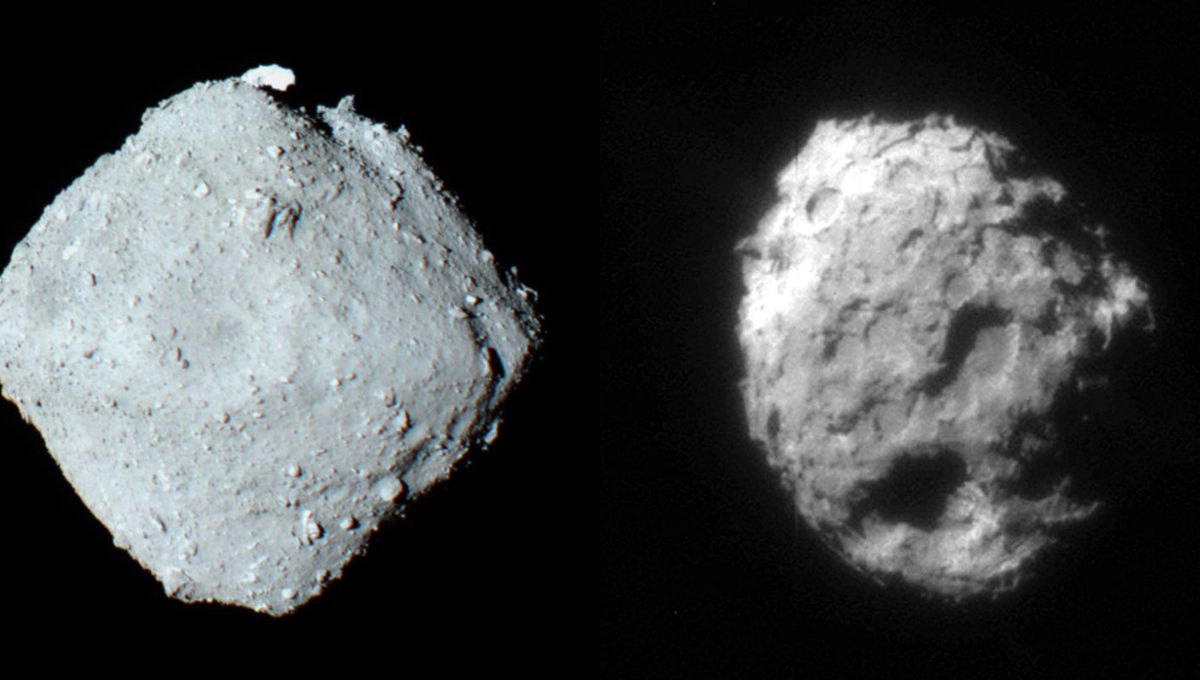
Asteroid Ryugu is one of the most famous Near-Earth Objects. It was visited by the Japanese probe Hayabusa-2 a few years ago and the spacecraft collected samples from its surface and below it. Analysis of this material has revealed incredible insights about Ryugu and the latest research continues this trend. It found an important connection with comet Wild 2 and the outer solar system.
Wild 2 (pronounced vilt two) was visited by NASA’s Stardust mission which collected particles from the comet’s coma – the fuzzy atmosphere that forms when a comet gets closer to the Sun. The comet formed and used to live further out in the solar system but in September 1974, passing very close to Jupiter, it was pulled forward into the inner solar system.
Ryugu’s history seems to be more complicated. The analysis published earlier this year revealed amino acids, the building blocks of proteins, as well as carbonate minerals that are expected to form in water-rich environments at low temperatures. This cannot have been the inner solar system. In particular, Ryugu showed similarity to the Ivuna meteorite. This space rock fell in Tanzania on December 16, 1938, and it is part of the CI group of carbonaceous chondrites. With only nine of them in the world, the CI group is one of the rarest.
Chemical analysis of the isotopic composition of copper and zinc in both Ryugu and Ivuna shows once again remarkable similarities. Isotopes are versions of the same chemical element with different masses due to the presence of extra neutrons in the nucleus. This chemical fingerprint delivers very intriguing insights into the composition and formation history.
Ryugu contains some material though that couldn’t have formed in the outer solar systems. Minerals such as olivine, spinel, and perovskite must have formed at high temperatures. And isotopic signatures of oxygen-16 in these minerals show that some of them are rich in this isotope of oxygen and some are poor. But the ratio is very similar to the CI chondrites and different from other carbonaceous meteorites.
And what’s very interesting is that the ratio is also similar to the comet dust collected from Wild 2, another crucial connection between Ryugu and the outer solar system. These findings suggest that asteroid Ryugu and the CI chondrites formed closer to the region where comets accrete material but that those minerals that formed in the inner solar system were brought outwards before the space bodies brought them back closer to Earth.
The findings are reported in Science Advances.
Source Link: Asteroid Ryugu Formed Far Away From Earth Before Moving Close To Our Planet